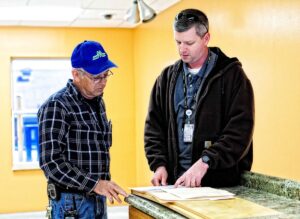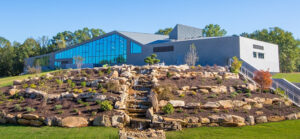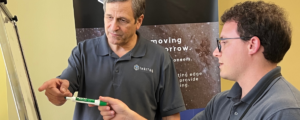Facilities and equipment are going to break down and fail; that’s the nature of most things, but it doesn’t have to be. A comprehensive preventive maintenance plan can stop equipment from breaking down and interrupting a facility’s operations. We spoke to the Director of Engineering, Greg Young, at INGITEQ, a Division of The Ginn Group, Inc. to better understand how engineering and facilities management work together to implement preventive maintenance.
Firstly, preventive maintenance is maintenance and support done beforehand to reduce downtime in a facility. Whereas in reactive maintenance, you are fixing things after equipment fails or breaks down. Preventive maintenance is not only important to properly care for equipment, but it can also result in cost savings because fixing something broken is more costly than replacing it before it breaks.
From an engineering standpoint, Young adds, “INGITEQ has done a lot on the controls and automation front: inspecting control panels and equipment for safety.” Worker safety is greatly impacted by preventive maintenance. For example, “If you have a system that never gets checked and something goes wrong, it can be extremely dangerous.” To prevent this, it’s important to fix equipment before it breaks, keeping everyone safe.

One of the tools our engineers use to keep equipment in working order is vibration monitoring. This is when an equipment’s vibration frequencies are monitored and logged. Monitoring machines and hardware ensures everything is stable and frequencies aren’t changing. If they do change, an analysis takes place to determine if the piece needs replacing. This prevents disasters or failures by minimizing breaks or shutdowns of equipment.
A software offered by Rockwell Automation named FactoryTalk AssetCentre has also made an impact on how our teams implement preventive maintenance in the field. This software ensures that even if a control device dies or malfunctions in the field, all of its systems are backed up and can still be used.
While preventive maintenance can increase safety and decrease downtime, it is not always the best choice for a facility. When determining whether reactive or preventive maintenance is best for your facility, a cost analysis takes place to ensure you’re not pouring money into an unjustified project. Young gives the example, “A coffee pot doesn’t need vibration-monitoring software! While we can automate your coffee-making needs for sure, there is such a thing as overkill.” In certain scenarios, capital improvement projects are what solve the problem, while in others properly implemented procedures for employees to follow is the best course.
Preventive maintenance can be a great tool for a number of facilities and improve their process, but it’s not for everyone. The team at The Ginn Group can help you determine what kind of maintenance is best for your facility’s needs and process. Reach out to us and see how we can help.








